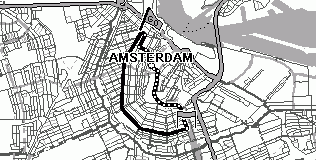I work at a research institute populated by mathematicians and computer scientists. When mathematicians ask me what usability is I reply:
A maximum of the function
∀ t Σ Ut, where t is a task and Ut= f1(Ct) + f2(St) + f3(Pt)
where Ct is the correctness with which you carry out task t, St is the speed you do it, and Pt the pleasure you get in doing it; the functions f1..3 allow you to assign weights to the factors: for instance for a game, satisfaction is the most important factor, and speed of achieving your task (finishing the game) of least importance.
Well, you have to talk to people in a language they understand, don't you?
If a non-mathemetician asks me, I say "How quickly and correctly you can achieve your purpose, and your satisfaction in doing it".
I have in my pocket a PDA with a program that has replaced any need for me to buy city maps any more. It is a city route finder. I have a CD with maps for most towns and cities in Western Europe, so that all I have to do is remember to load the map of where I am going, and I am set.
Apart from finding streets for me, as my old city maps used to do, the program will also calculate routes from place to place in the same city. Not always very necessary in cities built on grids, like New York, at least north of 14th street, but surprisingly handy in a circular city like Amsterdam where I live, where I have observed that intuition fails even locals when trying to find a shortest route: you may already be on your destination street, but the quickest route to your destination may not be to stay on it.

The program offers me three options for a route: quickest, shortest, and walk. Quickest and shortest are usually not much use to me, since I am usually cycling, and those routes usually take roads that are no fun (or illegal) for cycling. Luckily cyclists consider themselves a class of pedestrian in Amsterdam (ignoring one-way restrictions for instance) (and traffic lights come to that), and so the 'walk' option is fine.
Well, fine, but not optimal. When I calculate such routes myself (using a map, without any mechanical aid) I often use other criteria. My daily criterion is: the route with the least traffic. On holiday driving through Italy it has been: the most attractive route (attractiveness is marked on many maps by putting a green border on one or both sides of the road, so you just maximise the green), or the route using the smallest roads that are still paved (which often amounts to the same thing: attractiveness); walking in London it was: maximise the number of historical places I pass. So route finders still have some work to do, to offer routes that match our task (which isn't always "get me from A to B")
Now my question is: is the usability of this program how long, correctly and satisfyingly I take to calculate the route, or how long, correctly and satisfyingly I take to reach my destination? I would claim the latter. If I am right, this means that the design of your data structures, and the quality of your data can have a severe effect on the usability of your system.
© Copyright Steven Pemberton, Amsterdam, 2002. All rights reserved.
First published in ACM/Interactions, March 2002